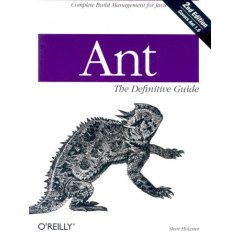Your Mono/.NET/Java-Day Digest
 Miguel’s Casual Dismissal of CAS
Miguel’s Casual Dismissal of CAS
In “CoreCLR Security,” my hero, Miguel de Icaza, says this quite casually, “.NET 1.x and 2.x have a system called the ‘Code Access Security’ (CAS) which Mono has never completely implemented since it there are very few applications that actually took advantage of it (Update: On the comments someone points out that CAS is fundamental for any uses of ClickOnce deployment; Mono has no support for ClickOnce deployment either). This is probably due to its complexity, which leads to people not trying it out in the first place.”
I’m looking for someone in the Microsoft-centric .NET space to rebut this one. It just can’t be that Microsoft spent millions on the team to produce something no one really uses.
Your first Mono app
There are several ways to get started in Mono. Brian Delahunty has his way in “Introduction to Mono—Your first Mono app.” My preferred way is to just copy my Windows console-based applications over to Ubuntu 6.0.6 and just run them. However, my previous entry on this subject implies that I could install a broken Mono 1.2.4 on 6.0.6 and ‘just run them’—or upgrade 6.0.6 and try my luck with both Mono and VMware.
Logging in .NET
The W2 labor here in the cubicles led to “Open Source Logging Tools in C#” and log4net is at the top of the list. These Java-to-C# ports are a great way to leverage a mature code base and workflow culture. It also may be a way to discover intimate and startling differences between Java and .NET.
 My Hibernate Kit
My Hibernate Kit
So, I am slowly (too slowly) reading a PDF print of Hibernate in Action. The word “action” in this title does not mean that a step-by-step tutorial on the web would be useless. This leads to “Introduction to Hibernate” at hibernate.org—and a little curiosity in Java called HSQLDB. Getting started at hibernate.org and then going back to the book sounds like a plan (a too-slow plan).
“Use of the PayPal payment system in ASP.NET”
Alexandr Golovanov: “The article pays special attention to the process of automatic payment verification using IPN (Instant Payment Notification). The article is based on the experience of KB_Soft Group and the official PayPal documentation.”
“Unraveling the Mysteries of .NET 2.0 Configuration”
Jon Rista: “With .NET 2.0, the days of writing your own (probably complicated, poorly-performing and tedious) code to manage custom XML configuration structures are over. The custom configuration capabilities of the built-in XML configuration subsystem in .NET 2.0 have been greatly revamped, boasting some extremely useful and time saving features.”
My assumption was that this article only applied to local .config files until Jon wrote this, “When working on a single project across multiple environments, managing configuration can become a nightmare. The process of managing multiple versions of a configuration file for multiple environments—i.e. development, testing, staging and production—at my current job involves manual comparisons of .config files whenever changes are deployed to one environment or another, with a manual merging process. I spent months trying to find a better way and eventually found one. Enter one of those oh-so beloved ‘undocumented’—or in this case, just poorly documented—features that Microsoft is so famous for: configSource. I only came across this little gem when I was digging through the .NET 2.0 configuration source code with Reflector, wonderful little tool.”
